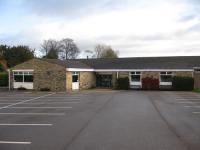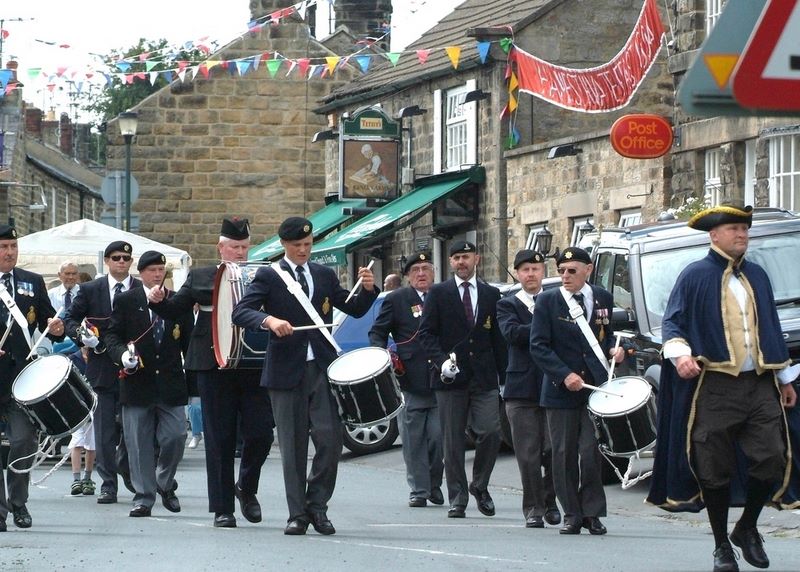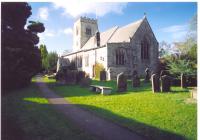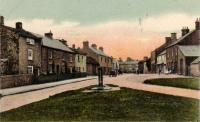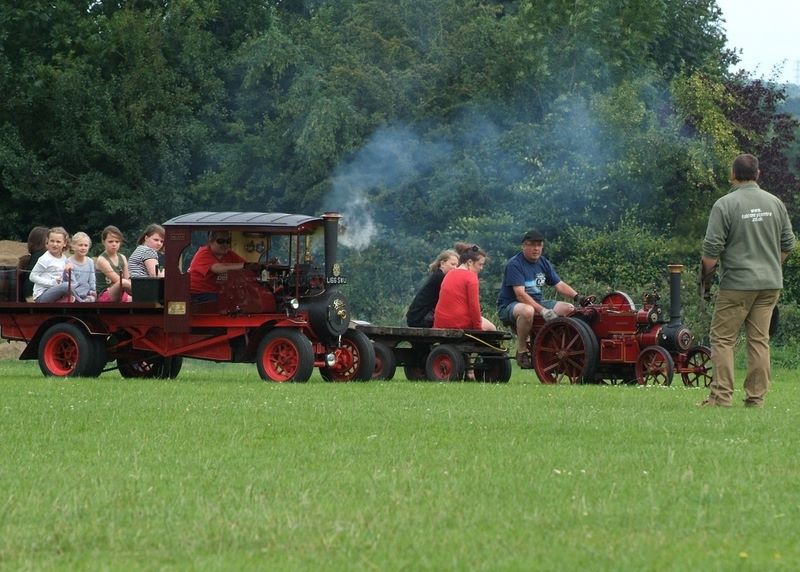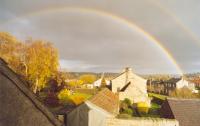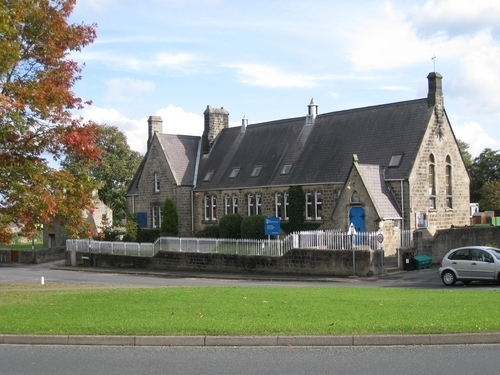Recent articles
© DT Online 2010 - 2025
| Blind Peter BarkerRemembering Hampsthwaite’s Blind Joiner - an article by Shaun Wilson Like the market town of Knaresborough, who had ‘Blind Jack’ – John Metcalf, the road builder of Yorkshire in the eighteenth century, the small rural village of Hampsthwaite had it’s blind hero also, almost a century later – Peter Barker who became known as ‘The Blind Joiner of Hampsthwaite.’ Though there are some similarities between John Metcalf and Peter Barker’s lives, these are purely co-incidental and each fulfilled a life, character and career in their own right. Blind Jack’s life is well documented. He is well known and remembered and his name is still mentioned today, over two hundred years after his death in 1810. He even has a road named after him – “John Metcalf Way”, a section of the A658 linking the A661 (Harrogate to Wetherby Road) with the A61 (Harrogate to Leeds Road). But just two years prior to John Metcalf’s death at Spofforth, another person, who during their lifetime was also to be considered “a most extraordinary man”, was born at Hampsthwaite on July 10th, 1808.
Peter Barker was the seventh and last born child of Richard and Alice Barker of Hampsthwaite. Richard Barker was a stone mason as was his father John, who came to Hampsthwaite in 1765 after his marriage to Grace Flower at Nidd. John is believed to have been born at Knaresborough and Grace was born at Burton Leonard. Peter Barker lost his father Richard when he was just four years of age and about the same time went blind from an inflammation of the eyes and was blind for the rest of his life. Peter Barker’s life is also well documented in his memoir - "Memoir of the life of Peter Barker, the blind joiner of Hampsthwaite" published by William Thorpe of Pateley Bridge in 1868. After Peter’s death in 1873, the booklet was reprinted. Peter is also mentioned by author William Grange in his book ‘The History and Topography of Harrogate and the Forest of Knaresborough’ published in 1871 and by Harry Speight in his book ‘Nidderdale’ published in 1906 and at the centenary of Peter Barker’s death in 1973, the Yorkshire Life magazine published an article on Blind Peter of Hampsthwaite in May of that year. Why was this man so remarkable? Well, he was a most extraordinary man, who, though blind could make almost anything which was made of wood and in a workmanlike manner. Though deprived of sight, he had a strong spirit of enterprise; he joined in the games and plays of older boys with confidence and skill equal to their own, and was, not infrequently, a contriver and ringleader in their petty mischievous pranks. If any one played a practical joke upon the blind boy, he was pretty certain, before long, to have it returned in kind. Having an ear for music, he became a performer on the violin, and, as he grew to manhood, frequented dances and merry-makings all round the country, as a performer on his instrument. From frequenting these jovial assemblies he began to have a love for strong drink, but his moral nature was too strong to be overcome by these temptations. He suddenly formed a determination to abandon the musical profession, as well as the companions with whom had brought him in contact, and beg his bread rather than obtain it in such a manner. The idea entered his mind that he would be a joiner, and he fell to work as a chair maker, succeeding at the first attempt, and followed the occupation of a joiner. He served no apprenticeship, received no instructions or ideas from others, and could make anything that is made of wood, from stackbar up to chest of drawers. The only peculiarity observable in any of his tools was his foot rule with which he made his measurements, the lines on which were marked by small pins, in different numbers, at different lengths on his rule. One amusing anecdote from his memoir tells the story of his attempt to build a hay stack. “He was partial to haymaking, could spread swathes readily and could also make a hay cock, but at this last occupation he considered himself slow. Once his ambition in the hayfield ended in disaster; Peter was under the impression that he could make one of the large cocks or pikes and in conjunction with an associate named Nutter (George Nutter), a cabinetmaker by trade who was deaf and dumb and known through the village by the name of dummy, they fell to work of their own accord, blind Pete, as he was always called, above to take the hay and form the pike, and dummy below to fork it to him They got on pretty well for a while and attained a considerable elevation, when at length, not having properly balanced the concern, it swayed to one side, and one of the workers not being able to see and the other not being able to tell him that any thing was wrong down fell the mass, partially burying its builders among the hay; dummy soon crept out and fled. Peter was found grasping the grass on the ground with both his hands, neither much hurt or much afraid: and when saluted by the farmer with "Now Pete, I’ve caught you in another of your mischiefs. What are you holding onto the grass for”? "Why, master," replied Peter, “I've tumbled down and I’m holding onto the grass for I don’t want to tumble back again and hurt myself.” Such was the end of Peter's first attempt at stack or pike making.” Peter’s mechanical gifts were also of a very varied character, and he could make the church clock go when no one else could. He used to go to church with a lantern on winter nights to ring the eight o’clock bell –- a long-practiced custom at Hampsthwaite, and a relic of the old Forest laws –- and the village folk would say, as they spied him trudging along with his lantern, “Here comes blind Peter.” He could find his way about the village unaided, and the same when he went to Knaresborough by rail, the many tortuous and intricate thoroughfares in that old town seeming no impediment to his progress.
Peter Barker married Mary Lupton of Felliscliffe at the Registry Office, Knaresborough on 24th December 1845 but when the then vicar of Hampsthwaite the Reverend Thomas Shann, found out about this he was none too pleased and persuaded the couple to have a church ceremony and blessing so Peter and Mary married a second time at Hampsthwaite on 25th January 1846. Peter and Mary had a son, James, born in 1846 and a daughter Alice, who was born in 1848. Alice died in 1853 aged five and Mary in 1862. James, who was the constant companion of his father died the following year in 1863 aged seventeen. Peter was a tall and athletic person; ready and quick in conversation; plain straightforward, and honest in the account he gave himself and his performances. He assumed no superiority over ordinary men on account of the abilities he possessed, but said it was Providence which gave him his talents, and the same Providence had supported him through life. He was held in high estimation by all his neighbours, and, without considering his situation, he appeared as happy, cheerful, and comfortable, as any man. Within the church at Hampsthwaite is a painting of a bearded man standing by the font, but the figure has never positively been identified. However, the daughter of the Reverend Henry Deck who was vicar of Hampsthwaite during the latter part of Peter’s life is believed to have painted a picture of Peter Barker, therefore is that painting of him? Peter Barker died at Hampsthwaite on the 18th February 1873 of pulmonary tuberculosis, a progressive wasting disease on 18th February 1873. Peter’s obituary published in the Knaresborough Post dated Saturday March 1st 1873 read: “HAMPSTHWAITE. DEATH OF A REMARKABLE VILLAGE RESIDENT – The old village of Hampsthwaite has recently lost one of its most interesting and worthy inhabitants, Peter Barker. Becoming blind through an attack of fever when three years old, his prospects in life were not very hopeful. But through the energy of his character and his natural ability, he maintained himself in a respectable position. He was skilful in music, and being possessed with a fine bass voice he was very efficient in the psalmody of the village church. With marvellous readiness, he, in his early days, embraced the business of a carpenter and cabinet maker, and of late years he added that of a glazier to his acquirements, and these were attained without serving as an apprentice or having any other instruction, but simply through his remarkable natural endowments. A lady who came to Hampsthwaite when he was 53 years old, taught him to read the Bible by means of Moon’s system of raised letters. With this “lamp to his feet” he traversed the valley of the shallow of death, and so found peace.” Peter’s village friends raised a headstone to commemorate him in these words: “Though blind from infancy he was skilful as a cabinet maker, a glazier, and a musician, by the sense of touch he searched the scriptures daily. “Jesus took the blind man by the hand. Whereas I was blind I now see." Peter is buried in Hampsthwaite Parish Churchyard.
Blind Peter Barker Remembering Hampsthwaite’s Blind Joiner - an article by Shaun Wilson Like the market town of Knaresborough, who had ‘Blind Jack’ – John Metcalf, the road builder of Yorkshire in the eighteenth century, the small rural village of Hampsthwaite had it’s blind hero also, almost a century later – Peter Barker who became known as ‘The Blind Joiner of Hampsthwaite.’ Though there are some similarities between John Metcalf and Peter Barker’s lives, these are purely co-incidental and each fulfilled a life, character and career in their own right. |







